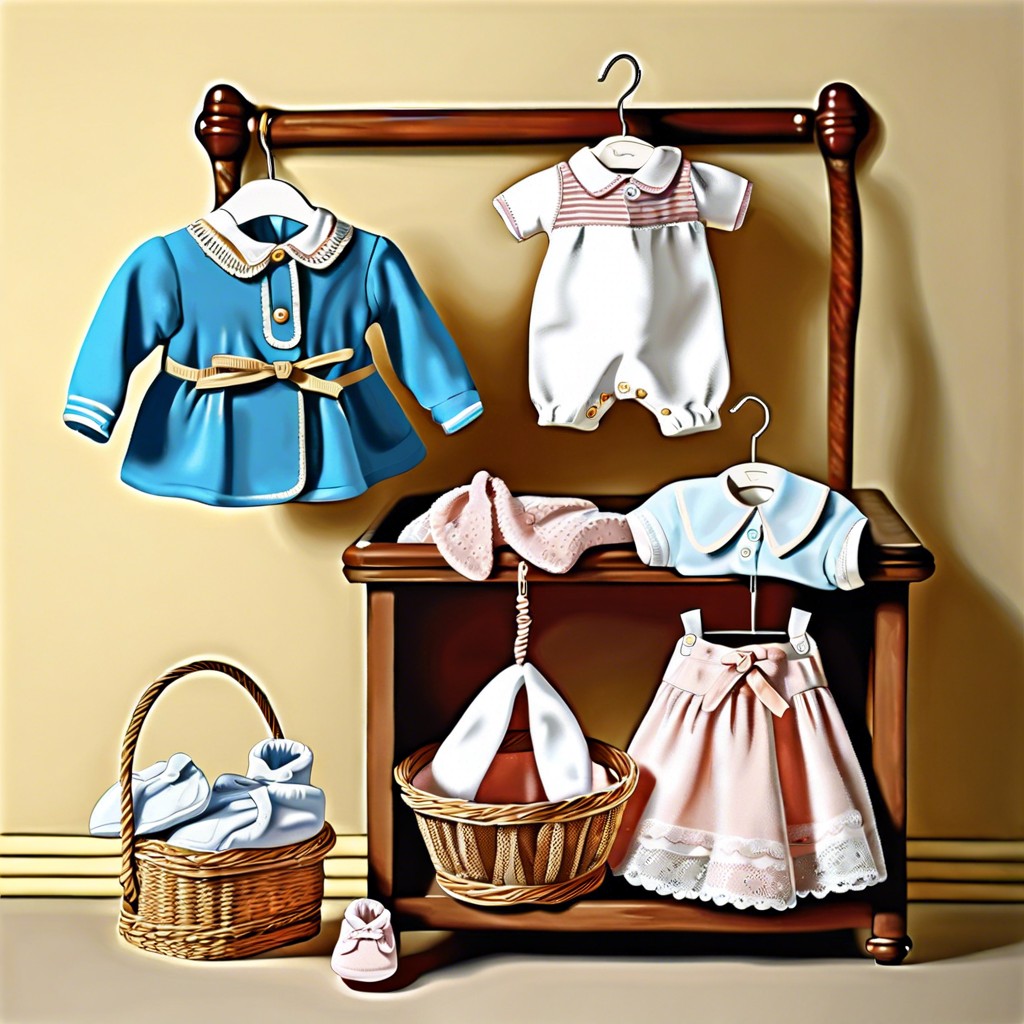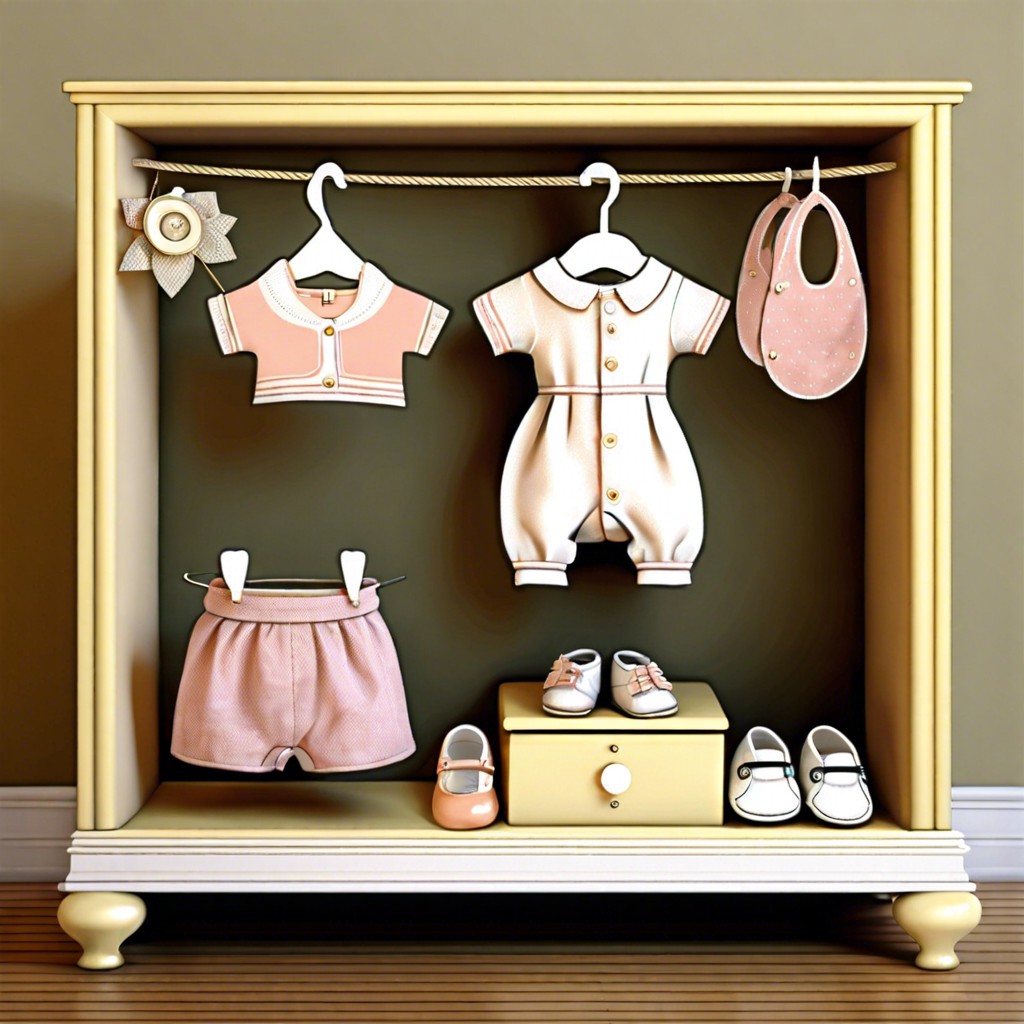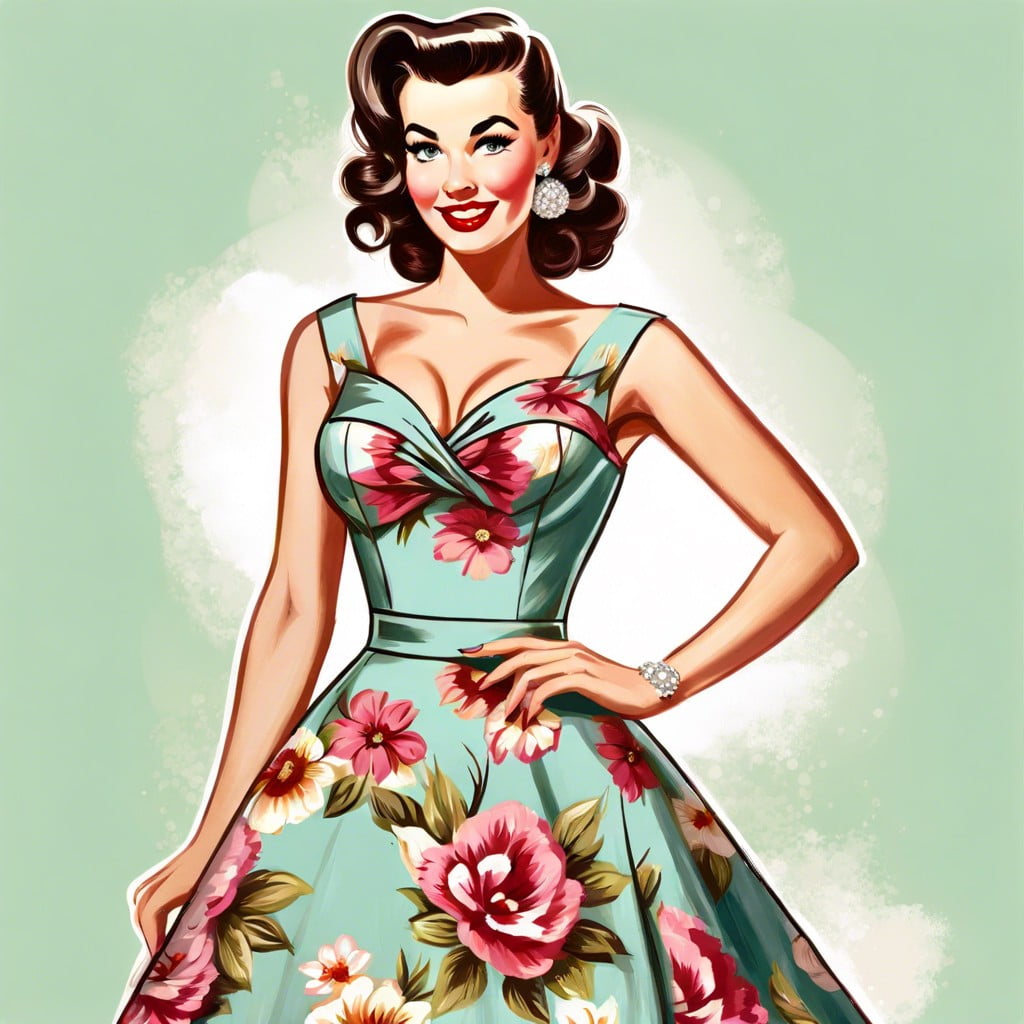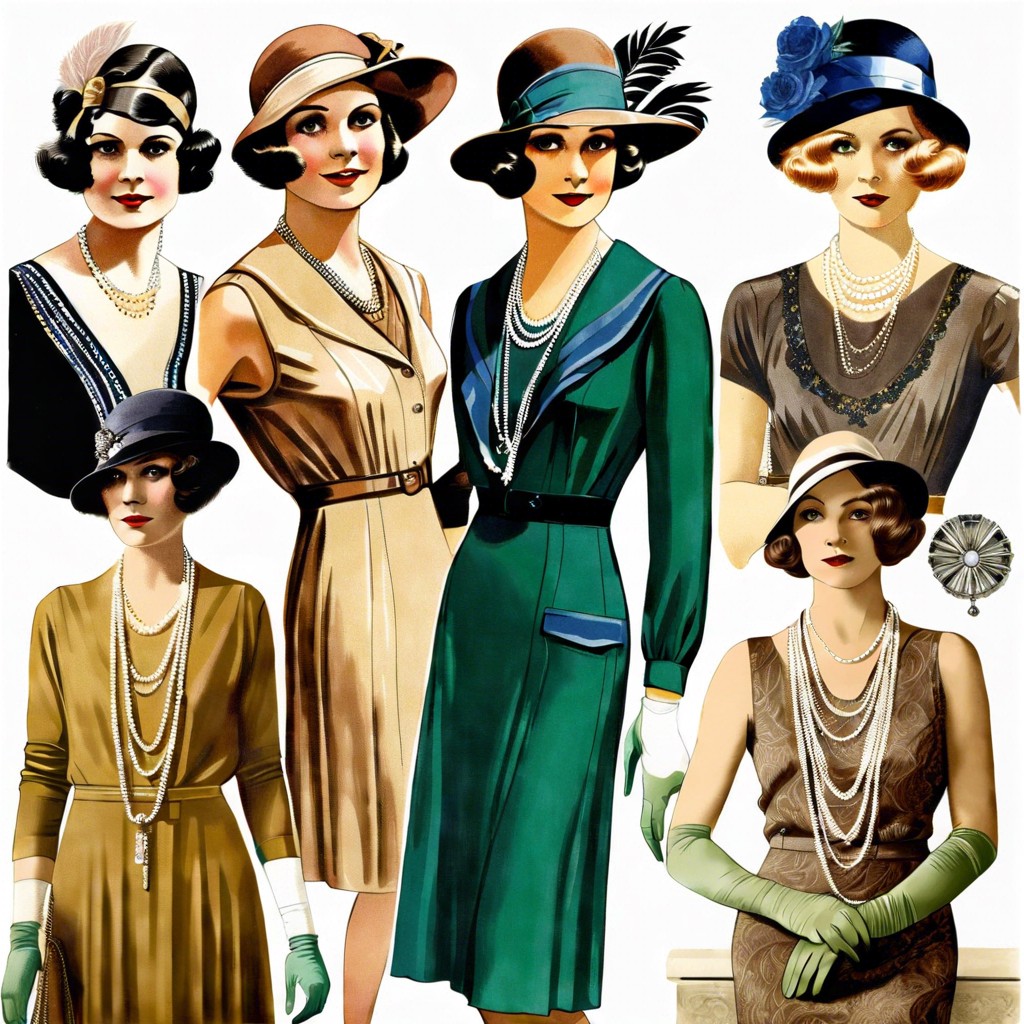Last updated on
Discover the charms and considerations of selecting vintage baby clothes in this comprehensive buying guide.
Key takeaways:
- Vintage baby clothes reflect historical shifts in fashion and culture.
- Styles range from intricate embroidery to playful prints and colors.
- Gentle care and preservation are essential for maintaining vintage baby clothes.
- Flea markets, thrift shops, online platforms, and estate sales are reliable sources.
- Vintage baby clothes are sought after for their charm, sustainability, and investment potential.
Historical Context of Vintage Baby Clothes

In the late 19th and early 20th centuries, baby clothing evolved significantly due to changes in societal attitudes and the advent of mass-produced textile. Initially, infants wore white dresses regardless of gender, a practice that simplified laundering with harsh soaps. As societal views on childhood developed, so did the styles, fabrics, and colors used in baby garments.
By the 1920s, pastel colors began to differentiate girls from boys, echoing the larger cultural swing towards individualism. The mid-20th century saw a boom in playful designs and durable fabrics aligning with the post-war optimism and technological advancements in textile manufacturing. Each piece not only rendered comfort but also mirrored its era’s socioeconomic context and fashion trends.
These periods mark significant chapters in the history of children’s fashion, reflecting broader cultural shifts and technological advancements, making each piece a storied relic of its time.
Iconic Styles and Designs in Vintage Baby Clothes

From the fine lace of Victorian christening gowns to the playful patterns of 1950s rompers, vintage baby clothing reflects a wide range of materials and designs that capture the essence of their eras. Key styles include intricate hand embroidery from the 1900s, which showcased meticulous craftsmanship and often symbolized familial affluence.
In the 1920s and 1930s, increased practicality became apparent with the introduction of button-up boots and knitted suits, accommodating the more active child. Post-war 1940s brought simplicity and durability into focus, often using fabrics easily washable at home—a nod to the era’s fabric shortages.
The 1950s and 1960s saw a burst of color and fun prints in children’s wear—reflecting the upbeat, post-war mood and economic boom. Characters from popular culture began appearing on garments, intertwining daily life with emerging media influences. Collectors and fashion enthusiasts often seek these pieces for their nostalgic charm and representation of historical societal shifts.
Care and Preservation of Vintage Baby Clothes

Handling vintage baby clothes requires a gentle touch to maintain their condition and charm. Always wash these delicate items by hand, using a mild detergent that is suitable for vintage fabrics. It’s important to avoid harsh chemicals or vigorous scrubbing, which can damage the fibers.
Dry them away from direct sunlight, as UV rays can fade and weaken old fabrics over time. Opt for air-drying on a flat surface to retain the shape and minimize stress on the seams.
When storing vintage baby clothes, use acid-free tissue paper to wrap each piece. This avoids yellowing and deterioration. Storing items in breathable cotton bags instead of plastic containers also helps prevent moisture buildup, which can lead to mold and mildew.
Regularly check stored clothes for any signs of pests or damage. Early detection can save these precious garments from irreparable harm.
Sourcing Vintage Baby Clothes: Tips and Trusted Venues

Exploring flea markets and local thrift shops often reveals hidden treasures, offering an array of vintage baby clothes with a story to tell. Check for any signs of wear or damage to ensure the piece maintains its beauty and functionality.
Online platforms like eBay, Etsy, and specific vintage clothing websites are goldmines for such items. Here, you can find specialized sellers who understand the value of vintage baby garments. Always read seller reviews and check return policies before purchasing.
Joining online forums and social media groups dedicated to vintage fashion might connect you with other enthusiasts who have garments to sell or trade. These communities can also offer valuable advice on what to look for in terms of authenticity and quality.
Attend estate sales or auctions where entire collections of clothing from past decades might be available. These venues often price items for quick selling, so you can snag a great deal on something truly special.
The Value of Vintage Baby Clothes in Today’s Market

Vintage baby clothes have surged in popularity, driven by both aesthetic and investment considerations. Their charm and historical appeal often evoke a sense of nostalgia, making them highly sought after at boutiques and online platforms.
Equally, these garments represent sustainable choices in an age of fast fashion. Conscious consumers appreciate vintage pieces for their lower environmental impact relative to newly manufactured items.
From a collector’s standpoint, certain rare or well-preserved items can fetch impressive prices on the resale market. Particularly those from notable eras or featuring distinct craftsmanship are considered treasures that can accrue value over time.
Moreover, the demand for unique baby clothing makes vintage items an attractive draw for boutique owners looking to differentiate their merchandise from mainstream retail offerings.
Related:




